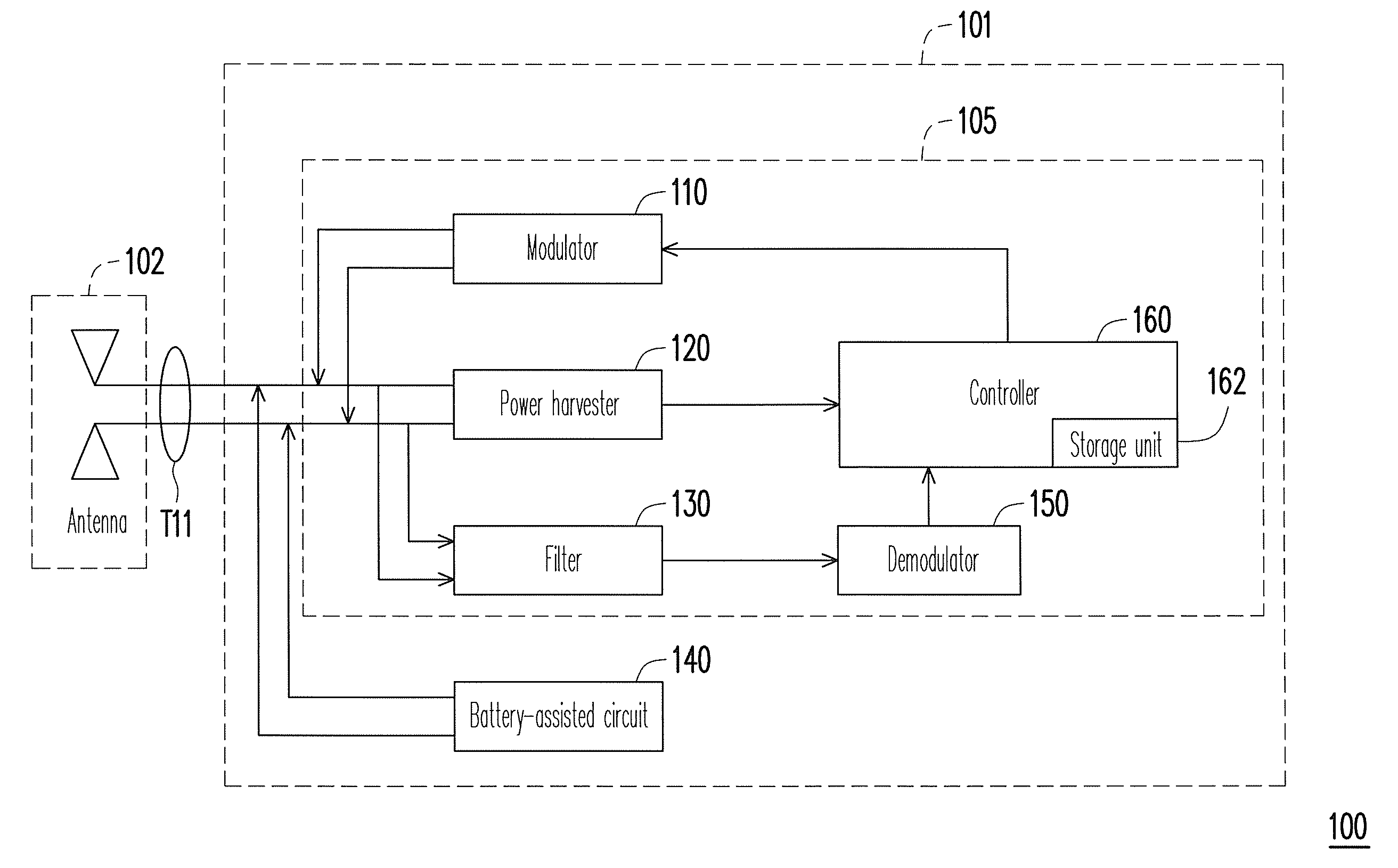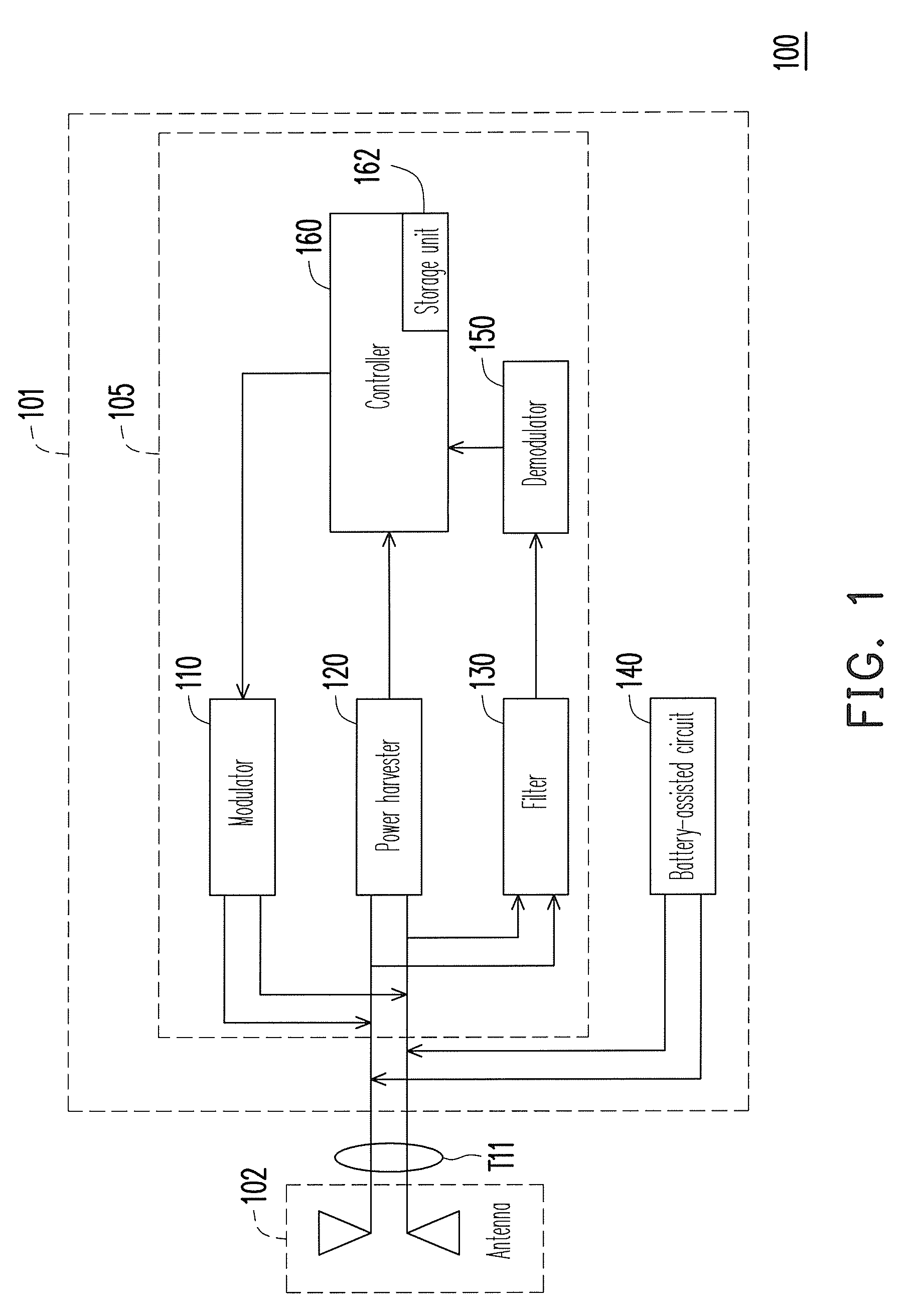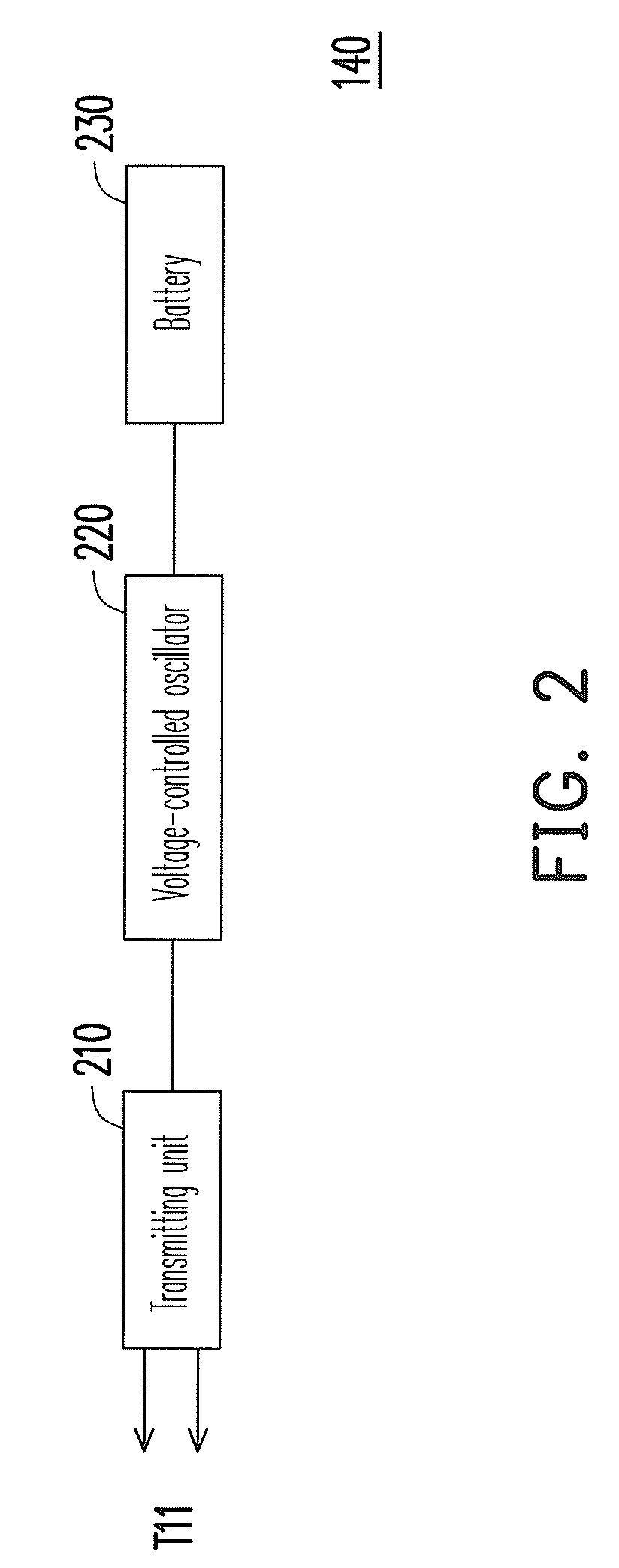Radio frequency identification tag
a radio frequency identification and tag technology, applied in the field of radio frequency identification (rfid) tags, can solve the problems of affecting the operation of the semi-passive rfid tag, the power of the signal received by the passive rfid tag is liable to be less than the required operating power, and the effective read distance is relatively short. to achieve the effect of strengthening the usage distance of the passive rfid tag
- Summary
- Abstract
- Description
- Claims
- Application Information
AI Technical Summary
Benefits of technology
Problems solved by technology
Method used
Image
Examples
Embodiment Construction
[0020]Referring to FIG. 1, FIG. 1 is a functional block diagram illustrating a radio frequency identification (RFID) tag according to an embodiment of the present invention. The RFID tag 100 includes a signal processing circuit 101 and an antenna 102. The signal processing circuit 101 includes a RF tag chip 105 and a battery-assisted circuit 140. The battery-assisted circuit 140 is coupled to a signal port T11 of the RF tag chip 105, and the signal port T11 has two ports. The RF tag chip 105 includes a modulator 110, a power harvester 120, a filter 130, a demodulator 150 and a controller 160. The modulator 110 is coupled between the signal port T11 and the controller 160. The power harvester 120 is coupled between the signal port T11 and the controller 160. The filter 130 is coupled between the demodulator 150 and the signal port T11, and another end of the demodulator 150 is coupled to the controller 160. The battery-assisted circuit 140 is also coupled to the signal port T11, wher...
PUM
 Login to View More
Login to View More Abstract
Description
Claims
Application Information
 Login to View More
Login to View More - R&D
- Intellectual Property
- Life Sciences
- Materials
- Tech Scout
- Unparalleled Data Quality
- Higher Quality Content
- 60% Fewer Hallucinations
Browse by: Latest US Patents, China's latest patents, Technical Efficacy Thesaurus, Application Domain, Technology Topic, Popular Technical Reports.
© 2025 PatSnap. All rights reserved.Legal|Privacy policy|Modern Slavery Act Transparency Statement|Sitemap|About US| Contact US: help@patsnap.com



